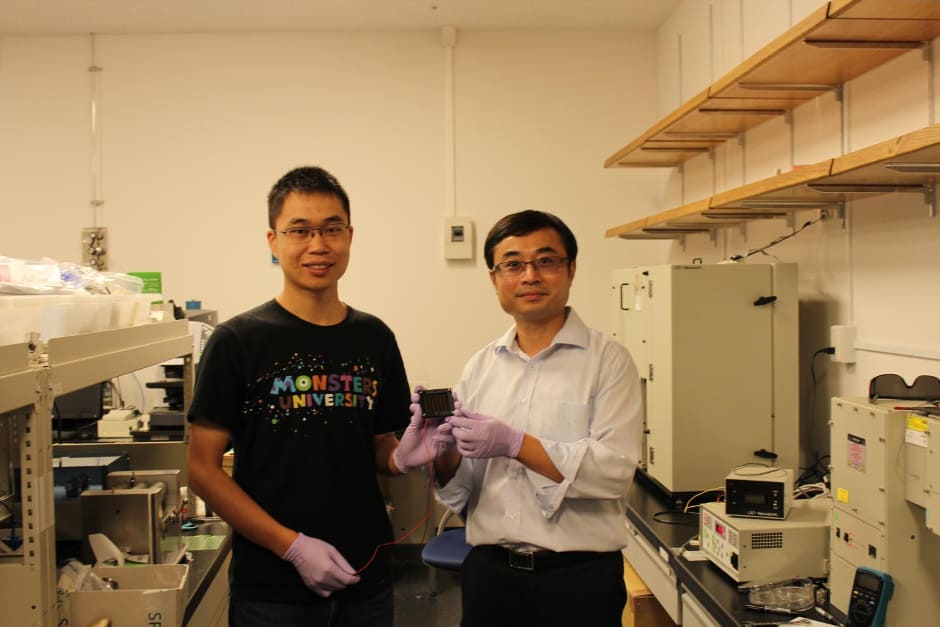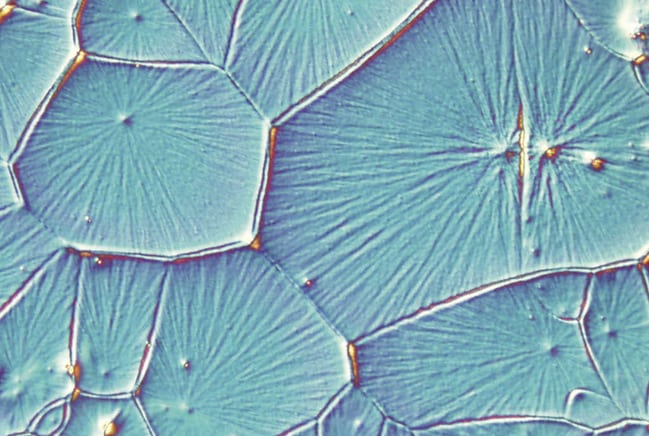Scientists in Japan have developed a perovskite process that lowers manufacturing costs and increases the efficiency of solar cells.

Prof Yabing Qi and his team at the Okinawa Institute of Science and Technology Graduate University (OIST), in collaboration with Prof Shengzhong Liu from Shaanxi Normal University, China, developed the cells using the materials and compounds that mimic the crystalline structure of perovskite, which is a naturally occurring mineral. They describe their technique in Nature Communications.
Prof Qi from the Energy Materials and Surface Sciences Unit at OIST said solar cell technologies need to fulfil three conditions to be worth commercialising, namely their conversion rate of sunlight into electricity must be high, they must be inexpensive to produce, and they must have a long lifespan.
Most commercial solar cells are currently made from crystalline silicon, which has a relatively high efficiency of around 22 per cent. The raw material for these solar cells is abundant but complex to process, a factor that increases both manufacturing costs and the cost of the finished product. Perovskite offers a more affordable solution, Prof Qi said.
"Research on perovskite cells is very promising. In only nine years, the efficiency of these cells went from 3.8 per cent to 23.3 per cent. Other technologies have taken over 30 years of research to reach the same level," said Prof Qi. The fabrication method he and his research team have developed produces perovskite solar cells with an efficiency comparable to crystalline silicon cells, but it is potentially less expensive than making silicon solar cells.
To make the new cells, the researchers coated transparent conductive substrates with perovskite films that absorb sunlight very efficiently. They used a gas-solid reaction-based technique in which the substrate is first coated with a layer of hydrogen lead triiodide incorporated with chlorine ions and methylamine gas - allowing them to reproducibly make large uniform panels, each consisting of multiple solar cells.

In developing the method, the scientists realised that making the perovskite layer one micron thick increased the working life of the solar cell significantly.
"The solar cells are almost unchanged after working for 800 hours," said Dr Zonghao Liu, a postdoctoral scholar in Prof Qi's research unit at OIST and the first author of the study.
According to OIST, a thicker coating boosted the stability of the solar cells and facilitated the fabrication processes, which lowered production costs. "The thicker absorber layer ensures good reproducibility of solar cell fabrication, which is a key advantage for mass manufacturing in the realistic industrial-scale setting," said Dr Liu.
Prof Qi and his team now need to increase the size of their newly designed solar cell from the 0.1mm² sized prototype to large commercial-sized panels.
"There exists a large gap between the findings in lab and reality, and the industry is not always ready to cover this entire gap by itself. So, the researchers need to take one more necessary step beyond their labs and meet the industry half-way," said Prof Qi.
The team has built a working model of their new perovskite solar modules consisting of multiple solar cells on 5cm × 5cm substrates, with an active area of 12cm², which is bigger than their experimental prototype but smaller than what is required commercially.
Although the process of up-scaling has reduced the efficiency of the cells from 20 per cent to 15 per cent, the researchers believe they can optimise the process and commercialise the solar cells.




Project to investigate hybrid approach to titanium manufacturing
What is this a hybrid of? Superplastic forming tends to be performed slowly as otherwise the behaviour is the hot creep that typifies hot...